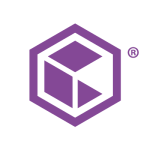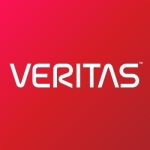What is our primary use case?
I am the global lead for infrastructure for the VMware and Windows Server environments. We are mainly using Zerto for disaster recovery. We have a prime site in Missouri, and we have plants in Taiwan, Malaysia, Japan, Italy, and Korea. We have 400 to 500 users in the environment.
We have installed Zerto software on the DR site and the production site. We will be using Zerto for the production site for all the centrally used applications, such as SAP, file servers, and Exchange. Because this is a central site, a lot of other sites come to this site for various things.
We also have Zerto on the DR site. In manufacturing, there are 60 or 70 tools, and each tool costs around $500,000. When the site goes down, you cannot transfer these tools very easily. It takes time. These are big tools, and it takes time for them to go somewhere else. You have to do a test again and go through the qualifications procedure, which takes time. As the IT department, we are interested in getting the applications that are used by all the sites centrally located, and if anything happens to the primary site, we want all the applications to be already there on the disaster recovery site. We just bring them up, and we are good to go.
Zerto will help to protect VMs in our environment. We have tried that in the test environment. That would be another reason for using Zerto.
How has it helped my organization?
We have used it for VMs. We know that it is a very good product. So far, we have only synced SAP and tested a few things. For SAP, there were two guys doing that, and they like Zerto very well. They have the test databases up there. It was smooth, and they liked it. The part that we still need to test is the Windows VMs where we can spin up a domain controller, change the IP, etc.
We can move data that is needed to keep our users collaborating with one another using Zerto because we are doing a continuous sync of the site. Once it is synced, we do not have to worry because everything happens in the background.
What is most valuable?
The replication feature where it constantly replicates and sees that data is always in sync is valuable.
The ease of moving all the VMs is valuable. All we have to do is change the IP address and the VMs are all up and running there. There is a passive sync with all the VMs. That is what we like about Zerto. VMware has its own tool, but you need to do a lot of scripting. In manufacturing, we have a one-man team, so we do not have time for all the specialized work. We needed an application that is more GUI-based so that we can pinpoint and easily move VMs. We can bring up all the VMs and make sure the data is in sync, and we are up and running, so the ease of implementation is what attracted us to Zerto.
Zerto is very easy to use. It is very professional. We had no issues at all. Even for bringing up a new ESX host, they have a standard procedure. It is very easy. With a few clicks, you can do the ESX installation.
What needs improvement?
There should be an automatic installation in a cluster. When I add a virtual client or ESX source to the cluster, it should automatically install that. There should be automatic installation. Currently, I have to do that manually.
They can give us a few training classes.
For how long have I used the solution?
We installed Zerto just three months back. We have not yet started using it properly.
What do I think about the stability of the solution?
Zerto is a very stable product. We have no issues. So far, it is working as planned. It is very stable. We will soon be working on it full-fledged.
What do I think about the scalability of the solution?
It is very scalable. We buy new licenses, and we just add another ESX or VM. We manually install it, and then we are good to go. It is pretty easy.
How are customer service and support?
We have not contacted support yet. So far, so good. Everything is working as planned.
Which solution did I use previously and why did I switch?
I tried VMware replication, but it was too hectic with all the scripts, so I gave it up.
How was the initial setup?
We implemented it recently. There was the ease of implementation. It was easy and straightforward.
In manufacturing, we have to make sure that everything is on-prem. The data has to be on-prem because all the tools write immediately to the servers. There are two types of manufacturing. For the type of manufacturing where your tools are constantly writing, cloud applications are not good. For example, when we scan wafers, there is a set of data, and when we go through another tool, there is another set of data. This has to be instantaneous. There is nothing called a cache or buffer on those tools. It has to be instantaneous. We cannot say that the cloud is down, and we lost the data. We cannot stop the tool because this is a manufacturing facility with 24-hour operations on 365 days. We cannot have any downtime where the full site has gone down because this site is used for central applications.
What about the implementation team?
I am the one who implemented it. Overall, there were just two people involved from our side. There was me and one more person. Because it was a new product, we also had a representative from Zerto as a standby. He would just watch our screen while we were implementing it. When we got stuck somewhere, he would help us. Because this was a DR site and it was a little far off, we wanted to make sure that everything went smoothly.
In terms of maintenance, so far, it did not require any maintenance from our side.
What was our ROI?
Having a solution like this is similar to having insurance. When you have a car accident, that is when you know the value of your insurance. Similarly, you cannot put a definite value on a solution like this till something happens, but there is peace of mind in knowing that the software is there, the VMs are there, and we can test it anytime. That is the true value.
What's my experience with pricing, setup cost, and licensing?
It is economical as compared to other brands.
Which other solutions did I evaluate?
We are an HPE shop. Zerto was procured by HPE, and we were looking for a DR solution. We went for Zerto because of its simplicity and ease of installation. We did an on-site proof of concept of Zerto for a year. We liked it and purchased it.
The only other product that we looked at was the VMware one because of the orchestrator. We did not look at any other products. I know that Veeam also has the same features that Zerto has. We had some discussions, but we never looked into it. Once we had a product that was easy to install, we did not feel the need to compare. It was doing what we wanted it to do.
Another factor for going for Zerto was that its price was economical. My boss, who is the CTO, liked its licensing scheme. It was much more economical as compared to VMware, and that is why we went ahead with Zerto.
What other advice do I have?
Before implementing this solution, in terms of preparation for disaster recovery, you have to identify the business applications that are critical to your environment. You have to scope that out and make sure you have your VMs accounted for because licensing depends on the number of VMs. With a product like Zerto, you have to know the number of VMs and the size of data you are going to sync. These are the two factors that you have to look into for disaster recovery.
Zerto is way better than other products. Installation is done with the click of a button. Everything happens in the background. You do not have to worry about it. As a product, we have not had any issues so far. However, we have not yet done a full-fledged disaster recovery. We have done minor testing, and we want to do major testing. As of now, I am very happy with the product. It does not need any further modifications. It is simple. It is nice. It is easy to execute, so I would keep it that way.
We have not yet used Zerto for immutable data copies. I have been playing around to migrate a VM and see how it works. So far, we have only used it to sync up the SAP side. Our SAP stuff is already synced up, and we have done some testing of it, but we have not done any disaster recovery.
I have not had a chance to assess Zerto for blocking unknown threats and attacks. We are mainly interested in using it for disaster recovery.
Overall, I would rate Zerto a ten out of ten.
Disclosure: PeerSpot contacted the reviewer to collect the review and to validate authenticity. The reviewer was referred by the vendor, but the review is not subject to editing or approval by the vendor.
















